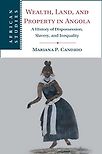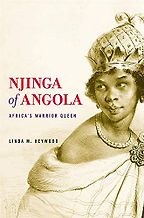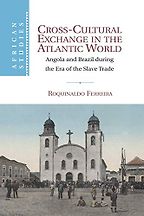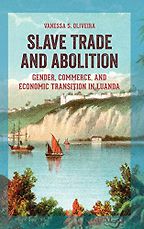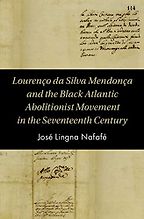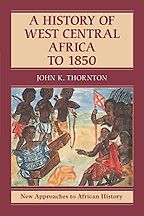We’re talking about pre-20th century Angola, the focus of your work. As I understand it, as a country, Angola only officially came into existence in the early 20th century. Did Angola have any unity prior to the 20th century or the arrival of the Portuguese?
Angola before the Berlin conference (1884-85) looked very different from its contemporary borders. However, there was a territory called Angola, which is represented in different 17th, 18th, and 19th-century maps. This does not mean that these borders made much sense for the people who lived in the region that we call Angola. There were lots of communities that lived there, with different political organizations. There were centralized states, such as Wambu, Matamba, Ndongo, or Ndembo, for example, as well as decentralized communities, such as Kisama. It is also important to recognize the presence of transhumant pastoral populations, living in smaller political organizations, which was the case of the Kilengues and Mundombes, or Ndombe, in English. Transhumant populations always represented a challenge for colonial states interested in taxing and controlling the movement of people. Besides states, chiefdoms, and pastoral communities, there were also hunter and gather populations, such as the different Kwandu groups. We don’t know much about the past of Kwandu people. Historians have a harder time reconstructing the histories of non-centralized populations, due to the limited access to primary sources. Centralized populations tend to maintain oral traditions alive and received more attention from contemporary travellers, missionaries, and colonial officers who wrote early accounts of this region.
The patchwork of political organizations and people did not prevent Portuguese cartographers from creating maps identifying Angola in the 18th and 19th century. Angola was a Portuguese invention, an imagined territory with clearly delimited borders. These 18th and 19th-century maps do not correspond to the 20th or 21st-century Angolan maps. Inside these neat and clearly defined borders there were several disputes about land access, sovereignty, and territorial control. European maps give the illusion, including to historians, of a cohesive and coherent territorial control. Yet, most of the territory was under local rulers’ control. Portuguese forces were small and weak, and relied on alliances with local rulers. But their naming practices, such as creating a space called Angola, have survived. Historians continue to employ the names Portuguese officers used to identify territories, rulers, and the communities that inhabited this region.
This was, and continues to be, a region rich in natural resources. There was an intense, long-distance trade in copper and ivory coming from the interior, but also in dried fish, cattle, and salt. The Portuguese always dreamt of finding silver, copper, and gold mines in their overseas expansion, but they failed in all their attempts to control mines in West Central Africa. Throughout the 16th and 17th century, however, they thought that they would be able to locate the sources of mineral wealth in the territory and organized raids and attacks that led to the capture and enslavement of millions of free West Central Africans, who were sold and shipped to the Americas.
“This is the region that lost the largest number of enslaved people to the transatlantic slave trade”
The Angola I have written about is very different from its 21st-century borders. Central to my work is an attempt to understand how different populations that lived in this region expressed ideas about wealth and power during these centuries of turmoil. Historians, anthropologists, and economists have argued that, before the 20th century, land was abundant and not valued as a form of wealth in the African continent. Yet, I came across several records of rulers and individuals who claimed land rights in the late 17th, 18th and 19th centuries. In fact, many of these rulers went to the Portuguese colonial administration to prove their land tenure. Several of them recorded their land claims, in order to prove their ability to transfer those rights to future generations. Looking at these documents, it became clear I needed to revisit this idea that there was a land surplus in Angola. Chiefs, rulers, and individuals clearly clashed over land use and succession. The arrival of the Portuguese intensified land disputes, yet the documents available reveal that local rulers, as well as regular men and women, had clear notions of land tenure. My book pushes against a scholarship that emphasizes rights in people as the main form of wealth accumulation in West Central Africa. I show how and when West Central Africans recognized land rights. By looking at different collections of historical documents, I focused on cases of African men and women who went to colonial courts to secure ownership rights over land, people, and objects. In many ways, my book, Wealth, Land, and Property in Angola historicizes land-grabbing, showing the links between dispossession, enslavement, forced displacement and inequality.
And in choosing your five books, did you have some sort of overarching themes or issues that you wanted to illustrate in choosing them?
All of the titles I have selected examine West Central African history, from the late 16th century to the late 19th century. Some of these titles focus on individuals, such as the case of Linda Heywood’s book Njinga of Angola (2017) or Roquinaldo Ferreira, Cross-Cultural Exchange in the Atlantic World (2012). Others give an overview of the political and economic history of the region, such as John Thornton’s A History of West Central Africa to 1850 (2020). I selected books that provide territorial coverage and are also accessible to non-academics. These five books have been written by professional historians who have done intense and innovative archival research, and they are accessible to non-specialists.
Anglophone audiences have not paid much attention to the history of Angola, yet this is a region that deserves attention. This is the region that lost the largest number of enslaved people to the transatlantic slave trade. Over 5.6 million people were shipped out of the ports of West Central Africa. Three of the top 5 slaving ports along the African coast were in what is nowadays Angola (Luanda, Benguela, and Cabinda). Daniel Domingues da Silva, in The Atlantic Slave Trade from West Central Africa, 1780—1867 (2017), examines the volume of the slave trade in Angola. So, anyone trying to understand the impact of the transatlantic slave trade on African societies needs to pay attention to Angola. It is essential to look at Angola and see what happened there in terms of political, economic, and social changes. This part of the African continent was involved in the transatlantic slave trade from its inception in the late 15th century until its end, in the second half of the 19th century. Until the 1860s, there were people being kidnapped and exported from this region. Most of those enslaved were taken to Brazil and Cuba.
Also crucial to me is to recognize the important work done by scholars originally from the Global South, such as Vanessa S. Oliveira, José Lingna Nafafé, and Roquinaldo Ferreira. There are many titles missing from this list of five books, including important work produced and published in Portuguese. Unfortunately, the important scholarship of Angolan historians is not available in English.
Let’s move on to the books. First up is Njinga of Angola by Linda Heywood. Tell us about this book and why you chose it.
There is a rich scholarship on male leaders in African history. We know a lot about kings and chiefs who ruled in different parts of the continent. In Njinga of Angola, Linda Heywood reconstructs the biography of a woman who ruled over Ndongo and Matamba during the 17th century. Heywood reconstructs Njinga’s life, from her birth to her death. It’s incredible to imagine that we have rich information about a 17th-century African woman who achieved immense political and economic power. As Heywood shows, there was nothing that prevented women from achieving political leadership. In fact, Njinga was quite skilled in diplomacy and warfare, attracting the attention of foreign merchants and missionaries. Heywood combined colonial records, missionary accounts and even letters signed by Njinga in her study.
Njinga is remembered today as an important historical figure both in Angola and in the diaspora. In many ways, Heywood problematizes the romantic memory of Njinga as an early anti-colonial figure, a proto-nationalist heroine. Heywood shows that Nijinga was a ruler of the 17th century, involved in slave raids and enslavement. Njinga’s concerns were related to her political survival, the protection of her relatives, and the economic gain of her elite.
It’s a very powerful book, showing how one individual can transform a society. Heywood examines gender identity, woman’s access to political leadership, and commercial skills. It is a very important and accessible book on 17th-century Angola.
Let’s move on to Cross-Cultural Exchange in the Atlantic World by Roquinaldo Ferreira. Tell us about this book and why you chose it.
This is a very influential book, stressing the Atlantic connections between Angola and Brazil during the 18th and 19th centuries. When we think about the period of the transatlantic slave trade, we tend to focus on African chiefs and merchants and important players such as Njinga. Ferreira shows, however, that there were lots of intermediaries in this process, including smaller traders, soldiers and priests who played key roles in the consolidation and organization of the slave trade. Ferreira rescues regular people from anonymity, stressing the historical agency of captains, priests and colonial officers, but also enslaved individuals, who are moving back and forth between Brazil and Angola. He delves into important collections of documents in Angolan archives and reconstructs a richer history of this region, examining mechanisms of enslavement and cosmologies. Ferreira taps into collections that were not accessible to foreign scholars until the early 21st century. Earlier generations of scholars didn’t have access to Angolan libraries and archives during the four decades of internal conflict, which included the anticolonial and the civil war that devasted Angola from 1961 to 2002.
Ferreira wrote a rich social history of Angola, examining the expansion of warfare in the 18th century, the use of court cases against enslavement, and the effects of the slave trade in Angola. His focus was on common people, peasants, soldiers, and enslaved individuals, and how they understood these two centuries of turmoil. Ferreira skilfully demonstrates that it is possible to write microhistories of Africans before the 20th century.
Let’s move on to Slave Trade and Abolition by Vanessa Oliveira.
Vanessa Oliveira’s book centres on women as commercial agents and cultural brokers in Luanda during the 19th century. While Heywood focused on political leaders, Oliveira centred her analysis on powerful economic actors, such as the donas, who had an active role in the transatlantic slave trade. Oliveira also reconstructed the experiences of women traders, who moved goods, controlled production—including the food business—and navigated to new business opportunities when the transatlantic slave trade came to an end. It’s a very innovative research and book, particularly in the types of primary sources Oliveira analysed to stress women’s agency. For instance, Oliveira read and analysed several tax and ecclesiastical records, a painstaking investigation, to counterpoint colonial and missionary reports that tend to ignore women. The result is that she was able to examine how many bags of cassava flour, beans or maize, women produced in Luanda during the 19th century. Oliveira also looked at the family and financial connections of coastal traders with economic elites located in the interior of the continent. The result is that Oliveira demonstrates that African women were important economic agents during the era of the slave trade, but also played a crucial role in the establishment of cash crop economies.
As Ferreira did in his book, Oliveira examined the case of individuals, such as Ana Joaquina Santos Silva, who looked for creative ways to continue exploiting enslaved labour locally. These donas, similarly to their counterparts in other African ports, were not abolitionist. They did not question the morality of the slave trade. In fact, they were committed to perpetuating violence and profiting from the sale of human beings. And, when the anti-slave trade agenda arrived in Angola in the 1830s, these merchants tried to figure out ways to make sure that they continued to participate in a global economy and that their personal fortunes did not dwindle. Oliveira shows that Luanda’s economy and society were dependent on the internal slave trade, and turned, in the 1830s, to an economy exploiting enslaved people locally. Oliveira examines the role of women merchants in the contraband and human trafficking in the 1830-1860 decades, as well as their investment in new plantations, including of sugar cane, palm oil, and coffee heavily dependent on enslaved labour.
Get the weekly Five Books newsletter
All of the women examined in Oliveira’s book were locally born, i.e. they were Africans, although what we would call ‘colourism’ plays a big role in their success and economic mobility. While most were classified as Black in historical documents, Oliveira shows that several were identified as mixed race or white. Most of them were related to local elites. They were well connected, linked to African rulers and chiefs. The daughters of Portuguese men or Brazilian-born men and local women also played economic roles, but unlike the daughter of local chiefs, the relatives of Portuguese men were labelled as white in historical records. Oliveira examines how colour classification affected their marriage choices. She shows that, in some cases, merchant women were from families that had monopolized trade for several generations. Some also ran family businesses, while their husbands travelled to interior markets or to Portugal and Brazil.
Oliveira’s book examines the role of women as slave owners in 19th-century Luanda. Important in this book is the fact that donas, the merchant women, became attractive marriage partners for impoverished Portuguese or Brazilian-born men, who arrived in Luanda lacking connections and capital. Marriage to local merchant women offered these immigrant men access to established commercial elites, financial support, free lodging, and translators. These locally born women spoke Kimbundu, knew the best markets to acquire wax, ivory, or coffee, controlled large numbers of free and unfree dependents, and had vast knowledge about the territory and cultures, as well as therapeutic skills. Oliveira stresses the role of African women as intellectual and economic agents.
Let’s move on to Lourenço da Silva Mendonça and the Black Atlantic Abolitionist Movement in the 17th Century by José Lingna Nafafé.
This is a recently published book. Nafafé makes a very original claim: that Lourenço da Silva Mendonça, an African noble, was an abolitionist in the 17th century. This is a very unusual interpretation of how we think about abolition. The common interpretation is that abolition is a European ideology, from the late 18th and early 19th century. It tends to give lots of attention to British missionaries and politicians. Nafafé, however, presents a different story. The book is about a royal prince, Mendonça, who decides to fight against the slave trade in the Vatican, employing religious language against the morality of the slave trade. Nafafé argues that abolition is not a European movement, but one that Africans conceived in the earlier centuries of the transatlantic slave trade. By looking at legal cases and missionary correspondence, Nafafé places Africans as legal agents who fought against the institution of slavery and the morality of the slave trade in European courts during the 17th century.
The book examines Ndongo’s and Kongo’s political and cultural landscapes, detailing internal political structures and the devastating effects of slave raids in both African states. Nafafé reconstructs the intellectual and legal debates in and around Angola about enslavement and the participation of local elites in the Atlantic commerce. The book argues that West Central African political elites created solidarity links with indigenous populations in the Americas. And it reconstructs Mendonça’s search for justice in the Vatican court.
This is an important book. It shakes our current scholarship about the slave trade and abolition. It pushes against scholars who have stressed the role of African elites in participating in the transatlantic slave trade. In recent decades, several books have been published stressing the alliances and cooperation between European traders and African elites. Nafafé’s book goes in a different direction, cautioning scholars to be a little more careful. He argues that earlier scholarship has downplayed the role of European profits and overemphasized the British protagonists in abolitionist debates. Nafefé shows that Mendonça made very important legal arguments using religious language, questioning and showing the inconsistency of Catholicism and the Catholic Church in embracing the slave trade. This book offers a different perspective, focusing on Africans as intellectual actors and legal experts.
Five Books interviews are expensive to produce. If you're enjoying this interview, please support us by donating a small amount.
Let’s move on to your final book, A History of West Central Africa to 1850 by John Thornton.
This was a difficult one, because John Thornton has written several important books about Angola, including The Kongolese Saint Anthony (1998). The reason why I selected A History of West Central Africa is that it is a survey text, giving unity to different parts of this region that tend to be studied in isolation. Rather than focusing on a single African state, or solely on the colony of Angola, Thornton summarizes the scholarship into a single volume, making this history accessible for people who do not have the time or energy to read ten or twenty different books about West Central Africa. It also brings new research into the nature of the state in the central highlands.
This book covers the political history of the territory that we call Angola nowadays. It examines relationships between the different populations that lived there, from the 15th century to the mid-19th century. Thornton’s book encompasses the period of contact with Europeans, the expansion of the transatlantic slave trade, and the effects of abolition. It combines decades of research, writing and reflection about the region. It is an important title to anyone trying to familiarize themselves with the political organization and populations of Angola.
Finally, Mariana, tell us a bit more about your book, Wealth, Land and Property in Angola and how you came to write it.
In my previous book, An African Slaving Port and the Atlantic World: Benguela and its Hinterland (2013), I came across lots of information about free and enslaved women and I assumed I would write a book about women in Angola. In the Angolan archives, I found records of women claiming land rights and registering ownership of houses. Soon, it became clear that property claims were gendered. Men and women made different claims and used legal strategies to solidify their wealth. My archival findings puzzled me: one of the central arguments in African history is that land was abundant in Africa. According to different generations of historians, African populations did not have individual ownership of land. Instead, African rulers and powerful men exercised rights in people, i.e. they accumulated dependents, which explains the existence of slavery in Africa before the arrival of Europeans. The argument, according to these scholars, was that powerful people expressed their wealth by accumulating and recruiting people, who laboured for them. It soon became clear that what I was writing was not a book about women, but a study focusing on how West Central Africans conceptualized land rights and use. Wealth, Land and Property is a book about land grabbing and its link with enslavement and the accumulation of things.
Women play a big role in this study, but I also wrote about how local male rulers expressed claims over land and people. It became clear that local leaders had very clear conceptions of occupation of land, they knew their territory, and they had conceptions of who could or couldn’t cultivate, graze their animals, or bury their dead. West Central Africans had land tenure.
It became clear that dispossession legitimized colonialism. Claiming that indigenous populations were not aware about land rights justified European land grabbing, territorial occupation, and colonial imposition. Land removals also facilitated enslavement; it exacerbated population displacement and violence. Wealth, Land and Property challenges the notion that land was plentiful. It examines land records, transactions, and struggles, while also considering competing ways to stress wealth. While writing this book, it became clear that I could not understand land tenure in this part of the African continent without discussing land grabbing and removal, enslavement, and exploitation of African labour. My book also discusses the role of Africans as global consumers, by examining the items that men and women accumulated during their lives. It reveals that societies along the coast and in the interior of Angola were connected to global economic networks.
Interview by Benedict King
February 14, 2023. Updated: February 21, 2023
Five Books aims to keep its book recommendations and interviews up to date. If you are the interviewee and would like to update your choice of books (or even just what you say about them) please email us at [email protected]

